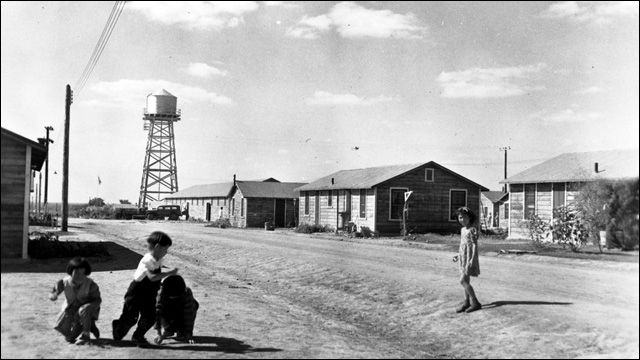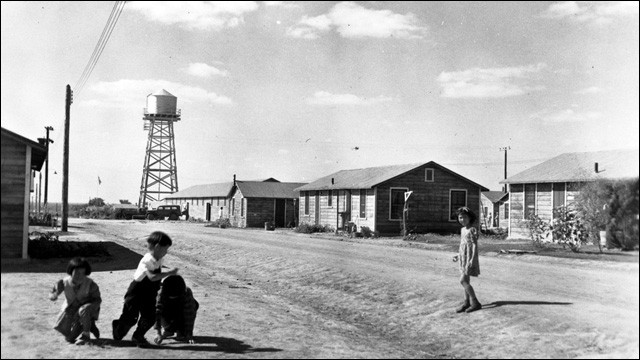Carmen Higa Mochizuki was just an eleven-year-old girl when her father, who was a poor milk seller in Peru, was arrested. All her nine siblings, along with her mother were arrested and shipped to New Orleans under American military guard. All the family’s assets were seized by the government and never returned.
At New Orleans, the family was stripped, sprayed with insecticide and then arrested as illegal aliens and finally put on a train to Crystal City, Texas.
All told, the Crystal City Alien Enemy Detention Facility held over 4,000 German, 2,200 Japanese and 300 Italians from 13 different Latin American countries with the vast majority coming from Peru. This was in addition to the many “enemy aliens” citizen and non-citizen who came from all over the US.
The Camp was opened in 1943 and was not officially closed until February 11, 1948 – the last remaining internment camp in the US. It was operated by the Immigration and Naturalization Service on the site of a migrant labour camp located about 110 miles south of San Antonio near the Mexican border.
After the Japanese bombing of Pearl Harbor on December 7, 1941, a national hysteria about a “fifth column” or saboteurs swept the country. German and Japanese, whether citizen, native born or not, automatically fell under suspicion. Many individuals were incarcerated although never officially arrested as they were deemed enemy aliens and therefore had limited legal rights under US law.
Crystal City became a prime destination for those with families. The facility was set up with separate housing units for each family, recreational facilities, gardens, stores, schools and churches. There was a German, Japanese and English language school.
The camp tended to be reasonably livable. In fact, some detainees referred to the time as the best of their lives as their families were all together; however, the 10 foot high barb wire fences, flood lights, guard towers made it clear to all detainees that this was an internment camp. All letters were censored and vehicles searched that entered or left. Mounted guards continually patrolled outside the fences.
One of the purposes of detaining individuals in the camp was to facilitate prisoner exchanges with Americans such as diplomats, businessmen, soldiers, physicians and missionaries who were stranded in behind enemy lines at the time the war broke out. Many detainees who were exchanged had never been to Germany or Japan and some were born in the US, the NPR News reports.
There is a book recently published by Jan Jarboe Russell entitled The Train to Crystal City: FDR’s Secret Prisoner Exchange Program and America’s Only Family Internment Camp During World War II.
By tracing the lives of two young girls – one borne to German- American parents and the other to Japanese- American parents, she describes the heartbreak of discovering that under President Roosevelt’s prisoner exchange program, the girls and their families were sent to Germany and Japan respectively in exchange for Americans who were seen as more valuable than them.

